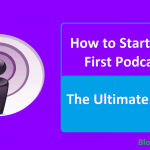First of all, let’s define affiliate marketing. It started rather recently, a few years after the internet came about. In its essence, it’s performance-based, as it rewards people or businesses for promoting a product.
An affiliate’s profit is directly proportional to their effect on the product’s sales. Hence, the suppliers share their profit with them. So when we buy a product through an affiliate, the commission goes to them.
However, affiliates don’t own what they promote, so this strategy is risk-free. It is a hybrid form of income, between active and passive. Active in the sense of our effort, and passive in the sense that the products we promote sell even when we are off the clock.
This is possible through affiliate links and similar solutions, such as pay-per-click (PPC) or search-engine-optimization (SEO), among others.
However, we shouldn’t confuse affiliate marketing with referral based sales, as they don’t depend as much on the internet. Although both work on a similar principle, original content is what sets them apart. Therefore, through it, we get to the audience.
When we offer content and build up an audience for it, we become attractive for advertisers in this type of marketing. Potential affiliates often gain an audience whose tendencies are measurable for advertisers.
It is the job of modern analytics to find that audience. Now, let’s say that I would like to sell boots, for example. I would try to find potential affiliates that delve into that domain.
Of course, the larger the audience they have, the higher the rate I would need to pay.
Contents In Page
Players in the Game
Let’s divide the four main entities in the affiliate marketing world. These are the supplier, the platform, the affiliate, and the consumer.
The suppliers need ads for their products, the platform is where the advertisement happens, the affiliate provides the content and the audience for the advertisers, and the consumer is a part of the audience and the target of the marketing. And they are the most important part if I may say so. However, along these four entities, new ones always are rising, such as affiliate management agencies or similar.
The Affiliate
I would like to begin from the content provider perspective because their first step into affiliate marketing may be the easiest.
First order of business for a content creator is to grow their audience or fan base. This doesn’t come as a surprise because it is one of the pillars of the free market. Hence, when someone like that gains some reach, they become fit for an affiliate role.
The main and the most desirable trait an affiliate can have is honesty. Now, this may sound cheesy, but it turns out that people don’t like sellouts at all.
My advice to all who are new to this type of marketing is that they actively seek and only accept to promote products they believe in and use. Not to sound cheesy again, but integrity does pay off in the long run.
To become an affiliate, be proactive and start reviewing products inside your domain — things you use on a daily basis, or even better, things you use to create your content.
If you do it well and gain some reach, you may become an affiliate. Above all, not quitting is crucial. This is a slow process, so it takes time to earn serious money.
The Supplier
If I was a supplier, the golden rule of business would dictate that I invest time and money into marketing.
If I intended to be successful, I would make sure that the investment paid off in the most potent way.
So how can I spend the least amount of money to find likely customers? Certainly, by using the main benefit of affiliate marketing — targeting preferred consumers.
Let’s go back to the example with boots. I would not seek affiliates that create, for example, pastry, or gaming-related content. I would rather seek outdoor, hunting, and similar types of content creators.
In addition, there are complex algorithms, apps, and tools that connect you to the consumer interested in buying your products. I would also begin with sending free samples to potential affiliates to use and review with no strings attached at first.
Furthermore, I would search for potential affiliates that already use my products.
If this process seems too hard, there are always affiliate management agencies.
They do come at a hefty price, so I would do the research first if there was ever a need for one.
The Platform
There are two types of platforms in the affiliate marketing world.
The first case would be a single platform that can be equated to the affiliates.
The most common example of such is a website. Therefore, the website combines the affiliate and the platform in one. The platform for a single website is, in fact, the internet.
But the internet can’t be a platform in this case since it doesn’t earn money.
The second case would be a network of some sort. In the early days of the internet, website networks played a more notable role then they do now.
Search engines like Google have shrunk their influence, therefore, making them almost obsolete. But then social networks came after affiliate marketing began and have started incorporating it from the jump.
Likewise, they’ve had a significant part in its uptake. They also made the potential affiliates more apparent to the advertisers.
Platforms such as Youtube, Instagram, Facebook, Twitter, etc., made it possible for a select group of people to make a living from affiliate marketing. They became super-affiliates, but more about them later.
The New Players
The Agencies and Affiliate Networks
The industry standard is not to use an affiliate management agency if the yearly turnaround isn’t at least five million dollars. That may illustrate what kind of infrastructure agencies have.
Yet there is a benefit to potential affiliates for using them. They do make it easier to find advertisers.
However, there is a hefty cost of entry, as potential clients demand a top quality service.
In contrast, affiliate networks are more affordable.
While various affiliates create networks, as a result, they share business connections and advertisers. This is, in my humble opinion, the easier first step into more advanced affiliate marketing.
Super-Affiliates
They are at the top of their game and are making the biggest margins.
Of course, every affiliate wants to become one, and every supplier wants to hire them.
If You Build It, They Will Come
So how do we enter the field of affiliate marketing? If you are a supplier, start your research, find content creators who already use your products or could use them.
Engage in a conversation with them, try to work out a deal, use their admiration of your products to your advantage.
If you are a content creator, begin reviewing the products you use or are thinking of using and inform the supplier of your work. Just start and don’t stop. Improve, be more precise, have an in-depth approach to these products, and don’t sell out.
Be honest and original, it will pay off in the long run.








